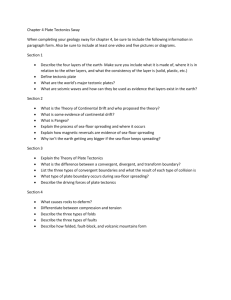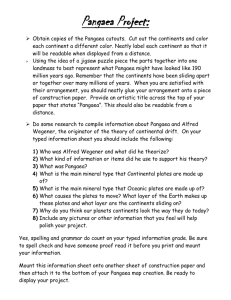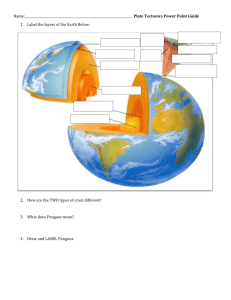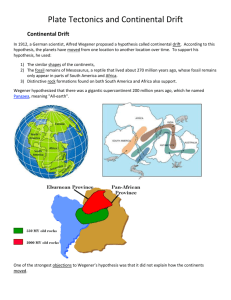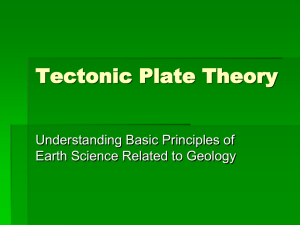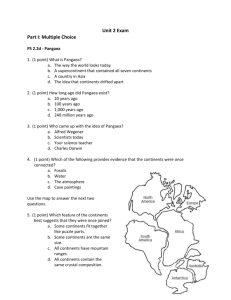File
advertisement
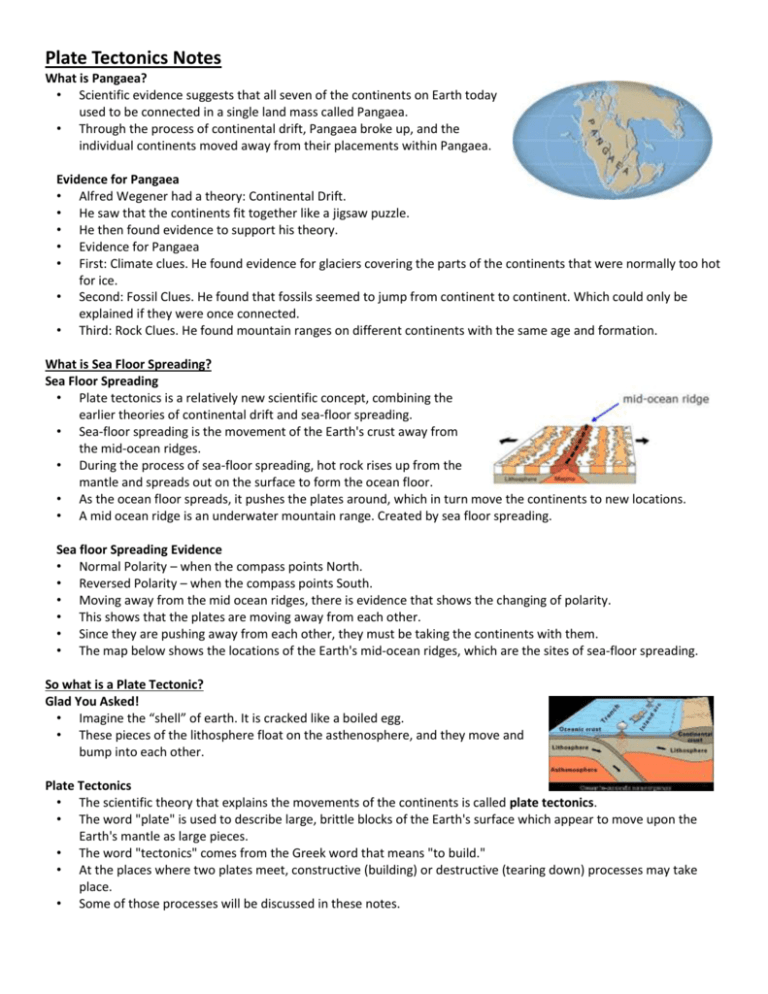
Plate Tectonics Notes What is Pangaea? • Scientific evidence suggests that all seven of the continents on Earth today used to be connected in a single land mass called Pangaea. • Through the process of continental drift, Pangaea broke up, and the individual continents moved away from their placements within Pangaea. Evidence for Pangaea • Alfred Wegener had a theory: Continental Drift. • He saw that the continents fit together like a jigsaw puzzle. • He then found evidence to support his theory. • Evidence for Pangaea • First: Climate clues. He found evidence for glaciers covering the parts of the continents that were normally too hot for ice. • Second: Fossil Clues. He found that fossils seemed to jump from continent to continent. Which could only be explained if they were once connected. • Third: Rock Clues. He found mountain ranges on different continents with the same age and formation. What is Sea Floor Spreading? Sea Floor Spreading • Plate tectonics is a relatively new scientific concept, combining the earlier theories of continental drift and sea-floor spreading. • Sea-floor spreading is the movement of the Earth's crust away from the mid-ocean ridges. • During the process of sea-floor spreading, hot rock rises up from the mantle and spreads out on the surface to form the ocean floor. • As the ocean floor spreads, it pushes the plates around, which in turn move the continents to new locations. • A mid ocean ridge is an underwater mountain range. Created by sea floor spreading. Sea floor Spreading Evidence • Normal Polarity – when the compass points North. • Reversed Polarity – when the compass points South. • Moving away from the mid ocean ridges, there is evidence that shows the changing of polarity. • This shows that the plates are moving away from each other. • Since they are pushing away from each other, they must be taking the continents with them. • The map below shows the locations of the Earth's mid-ocean ridges, which are the sites of sea-floor spreading. So what is a Plate Tectonic? Glad You Asked! • Imagine the “shell” of earth. It is cracked like a boiled egg. • These pieces of the lithosphere float on the asthenosphere, and they move and bump into each other. Plate Tectonics • The scientific theory that explains the movements of the continents is called plate tectonics. • The word "plate" is used to describe large, brittle blocks of the Earth's surface which appear to move upon the Earth's mantle as large pieces. • The word "tectonics" comes from the Greek word that means "to build." • At the places where two plates meet, constructive (building) or destructive (tearing down) processes may take place. • Some of those processes will be discussed in these notes. What are the Types of Boundaries? Plate Boundaries • Convergent – when the plates are pushing into each other. • Divergent – when the plates are moving away from each other. • Transform – when the plate are moving past each other and scraping. • Subduction: at a convergent boundary, the less dense plate goes under the more dense plate. What causes the movement? Convection • Remember that convection is the flow of heated material. • Hot material flows up, and cooler material flows down. • Same thing happens in the asthenosphere. How do the plates move? • Basal drag – the convection current drags the plate. • Ridge Push – at the mid ocean ridge, it will push up and across, moving the plate. • Slab Pull – As a slab sinks, it will be pulled down by the convection current.

